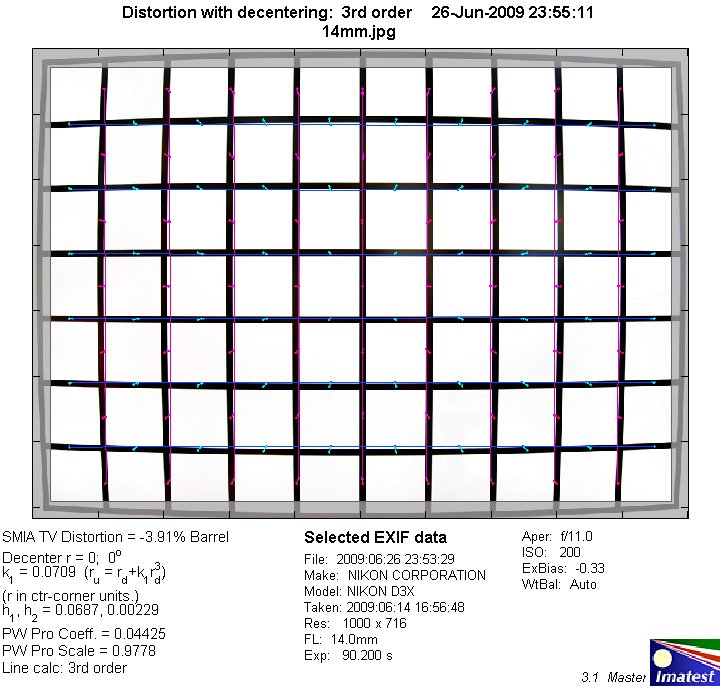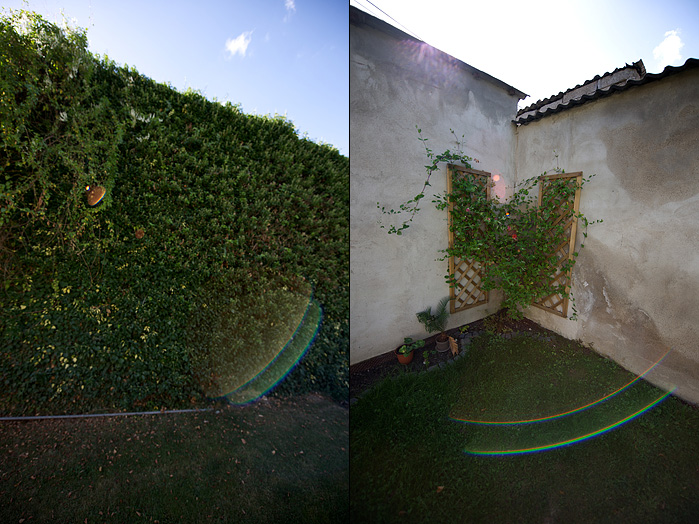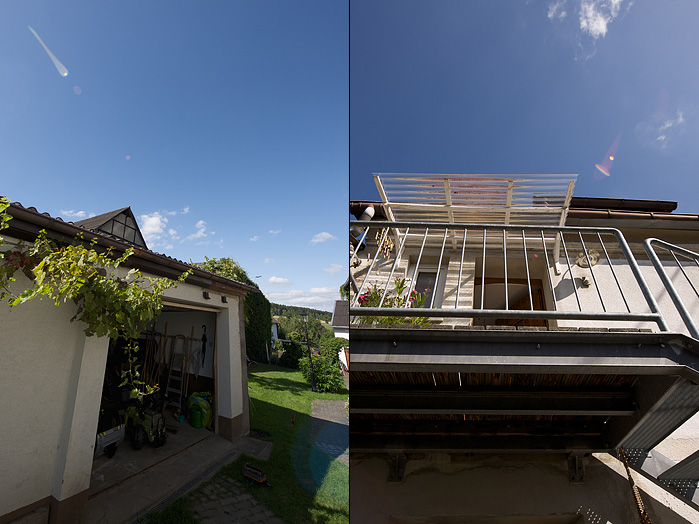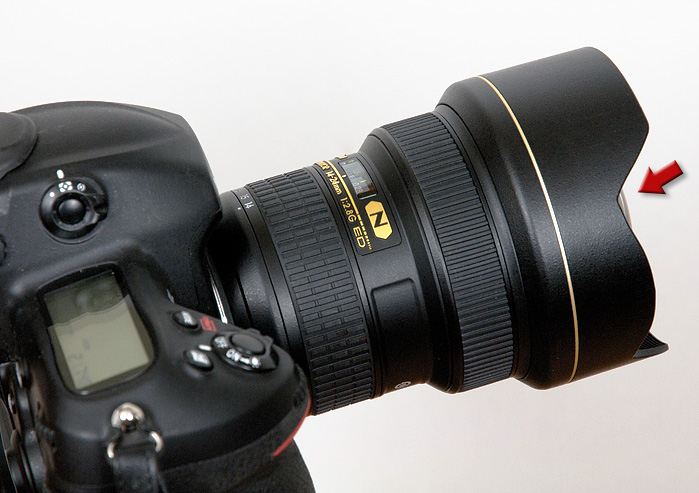|
Page 2 of 3

Distortion
Ultra wide angle lenses usually show a considerable amount of barrel distortion and the Nikkor AF-S 14-24 is no exception to this rule. At 14 mm the lens shows barrel distortion of almost 4 %, a visible amount of barrel distortion (1.6%) is still left at 18 mm while at 21mm and 24 mm the lens can be considered distortion-free (0.5% and 0.25% barrel distortion is certainly not noticeable in the field with most subjects). Especially at the short end, that's fairly large amount, however the good news is that it is uniform distortion that is not too complicated to correct by software in post processing (at the expense of resolution and a little field of view, of course).
|
Move the mouse cursor over the focal length text marks below to observe the respective distortion
|
| 14mm |
18mm |
21mm |
24mm |
|

|
The chart above has a real-world size of about 120x80cm.
Vignetting
Being both fast and ultra wide, some vignetting has to be expected. Wide open, the amount of vignetting is very visible, especially at the shorter focal lengths. Stopping down helps to reduce vignetting considerably, but at least half a stop remains even here. This may be visible in critical scenes, however for most subjects it's probably not field-relevant.
We're performing our vignetting analysis based on
(uncorrected) JPEGs straight from the camera. The JPG engine of the Nikon D3x features a rather flat
gradation curve, thus has a moderate contrast characteristic, resulting in comparatively low vignetting figures - the
corresponding Canon figures are roughly 40% higher due to the more
aggressive default contrast setting.

MTF (resolution)
The lens produced impressive resolution figures when we reviewed it on our DX camera and it continues to do so on the D3x.
At all focal lengths the center resolution is excellent wide open already and remains on this very high level until diffraction kicks in significantly at f/11. Just like with the D200, at 14 mm the lens probably outresolves the D3x sensor (which is no real surprise, since both cameras feature a very similar pixel density).
At 14 mm, 18 mm and 21 mm the borders and extreme corners follow only slightly behind with very good resolution, at 14 mm just crossing the mark to excellent figures at some aperture values. At 24 mm, the border and extreme corner resolution falls a bit behind, but can recover to very good figures stopped down to f/5.6 or f/8.
All in all, an impressive performance.
Please note that the MTF results are not directly comparable across the different systems!
Below is a simplified summary of the formal findings. The chart shows line widths
per picture height (LW/PH) which can be taken as a measure for sharpness.
If you want to know more about the MTF50 figures you may check out the corresponding
Imatest Explanations

Chromatic Aberrations (CAs)
Chromatic aberrations (color shadows at harsh contrast transitions) are in the range of roughly 1 to 1.3 pixels throughout the whole focal and aperture range. Given the huge resolution of the test camera, this might be visible in very large prints (or heavy crops), however, for typical print sizes the problem isn't really field relevant for most subjects. In addition, CAs can easily be corrected in software or by the camera itself.

Flare
The lens' huge front element seems to collect sunlight from almost anywhere and as result the Nikkor 14-24 is very prone to flare.
See the samples below, which where shot with an FX camera. These are web-sized full images, not crops. You can see lens flare in one of the samples on the next page, too (the portrait mode landscape shot with a large amount of sky).

Ok, these first two images are a bit unfair to start with. They were taken straight into the sun or with the sun just outside the frame.
The vast majority of lenses would produce flare here and it just shows that the Nikkor
is no different. However, the amount of flare, especially towards the border opposite to the source of light, is rather high.
The 2nd set of images is different, though. You may notice that in these shots the sun is actually coming from slightly behind the camera, still there are pronounced flare spots.

As mentioned the Nikkor has a very protruding front element and at the wide end, the fixed lens hood is not able to provide full protection, even if the source of the light is slightly behind the camera. In the shot below you can clearly see that parts of the front lens are visible at such angles, too. This way, the lens manages to "bend" sunlight and thus flare into the image when you really wouldn't expect it.

With an ultra wide lens, there's an additional challenge to master: your own shadow. The enormous field of view easily includes the photographer's shadow, too. This is of course an issue with any ultra wide angle lens and to avoid it the best option is to shoot at a slight angle towards the sun (not have it centered in your back). However that's exactly when you'll run into the issue of flare again.
|